Botanical Name: Corylopsis pauciflora
Common Name: winter hazel, buttercup winter hazel
Family: Hamamelidaceae
Distribution/Origin: Japan, Taiwan
Leaf: ovate, bright green, sunken veining, slightly toothed margin
Bud: alternate
Flower: small drooping clusters, racemes, yellow
Fruit/Seed: two beaked capsules, each cell containing 2 small seeds
Stem/Bark:
Size: 4-6’ height, 4-6’ spread
Habit: dense, spreading
Form: oval, horizontal, vase
Soil conditions: acidic, light, organically rich, well drained, tolerant of average
Moisture: medium
Sun: full sun to partial shade
Exposure: protection from high winds, appreciates some afternoon shade
Landscape use: shrub border, woodland garden, spring interest
Notes: flowers appear before leaves (early spring), prune as needed immediately after flowering




Botanical Name: Cyclamen coum
Common Name: eastern sowbread
Family: Primulaceae
Distribution/Origin: Mediterranean
Leaf: rounded, sometimes angular, attractively mottled, heart shaped
Bud: basal
Flower: perfect, showy, purple to pink
Fruit/Seed: seed capsule
Stem/Bark: grown from tubers
Size: under 6” height, 6-9” spread
Habit: pendulous
Form: mounded, vase
Soil conditions: moderately fertile, humus rich, well drained
Moisture: moderate
Sun: partial shade
Exposure: drought tolerant when established
Landscape use: ground cover, understory, alpine gardens, spring interest, beds, borders
Notes:

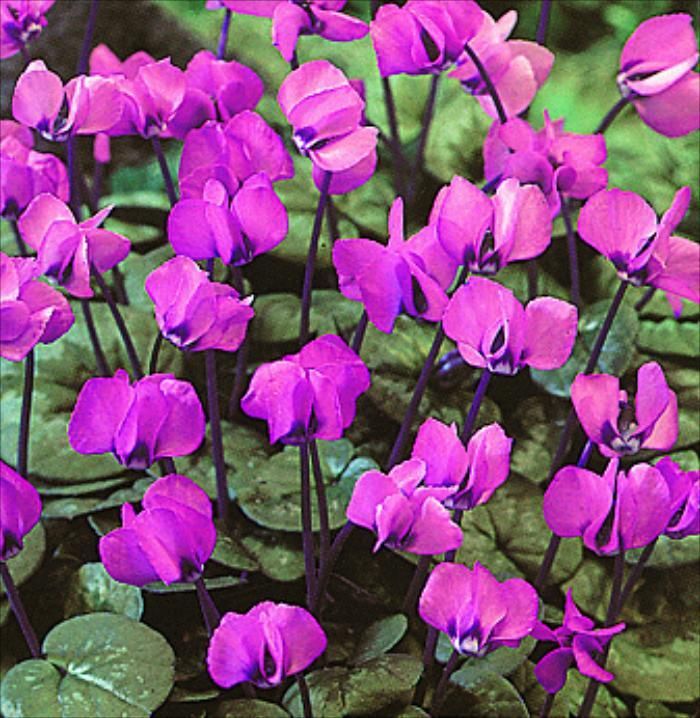
Botanical Name: Cyclamen hederifolium
Common Name: hardy cyclamen
Family: Primulaceae
Distribution/Origin: central/west Asia, Europe, Mediterranean
Leaf: simple, ovate, undulate/crenate margins
Bud: basal
Flower: perfect, 4 petaled, white to purple, showy
Fruit/Seed: round pod, amber colored seeds
Stem/Bark: grown from tubers
Size: up to 1’ height, 1-2’ spread
Habit: pendulous
Form: mounding, vase
Soil conditions: moderately fertile, humus rich, well drained
Moisture: moderate
Sun: partial shade
Exposure: sheltered
Landscape use: underplanting, containers, alpine gardens, rock gardens
Notes:

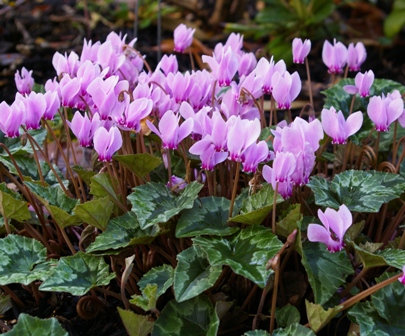


Botanical Name: Berberis buxifolia
Common Name: magellan barberry
Family: Berberidaceae
Distribution/Origin: South America, naturalized in Britain, garden origin
Leaf: simple, leathery with pinnate venation, prickly surface, ovate with entire margins
Bud: alternate, ovoid, shiny stipules
Flower: perfect, paired, showy, yellow, April to May
Fruit/Seed: blue black berries, June to July
Stem/Bark: smooth, multi stemmed trunk, tan to brown
Size: 3-8’ height, up to 9’ spread
Habit: arching, dense
Form: mounded, round
Soil conditions: light to medium soils, tolerates poor soils, rocky, gravelly, well drained
Moisture: dry to moist
Sun: full to partial sun
Exposure: pest and disease resistant
Landscape use: woodland gardens, hedge, filler, group or mass planting, rock garden, security
Notes: prune back hard to maintain size




Botanical Name: Berberis darwinii
Common Name: Darwin's barberry
Family: Berberidaceae
Distribution/Origin: South America (Chile & Argentina)
Leaf: small, oval, spiny margins, clusters of 2-5
Bud: alternate
Flower: orange, dense racemes
Fruit/Seed: small purple to black berry
Stem/Bark: grey to tan, multi stemmed, spines present
Size: 5-7’ height, 5-7’ spread
Habit: bushy, dense
Form: rounded, vase
Soil conditions: adaptable, well drained
Moisture: medium
Sun: full to part sun
Exposure: will grow in any soils unless waterlogged, sunny spots encourage fruiting
Landscape use: woodland garden, hedge, security, dappled shade
Notes:




Botanical Name: Berberis julianae
Common Name: wintergreen barberry
Family: Berberidaceae
Distribution/Origin: western China
Leaf: lanceolate to obovate, spiny margins, leathery w/ pinnate venation, dark green, undersides light
Bud: alternate
Flower: floriferous clusters, yellow with red tinge, up to 15 flowers per cluster, March-April
Fruit/Seed: blue to black drupe
Stem/Bark: smooth to light fissuring, grey to yellow
Size: 10-16’ height, 7-10’ spread
Habit: dense, upright
Form: oval-vertical
Soil conditions: acidic, well drained, adaptable
Moisture: moderate
Sun: filtered shade to full sun
Exposure: will grow in any soil unless waterlogged
Landscape use: hedgerow, hedge, mixed borders, screening, security/barrier
Notes:




Botanical Name: Berberis verruculosa
Common Name: warty barberry
Family: Berberidaceae
Distribution/Origin: central and western China
Leaf: small, glossy w/ grey-silver undersides, elliptic to obovate, spinose margins
Bud: alternate
Flower: axillary clusters or racemes, perfect, yellow, April to May
Fruit/Seed: black to blue berries
Stem/Bark: spines present, smooth to lightly fissured, multi stemmed trunk
Size: 2-5’ height, 3-5’ spread
Habit: arching, dense
Form: round
Soil conditions: well drained, average-adaptable
Moisture: moderate
Sun: full to partial shade
Exposure:
Landscape use: filler, group or mass planting, hedge, security barrier, banks/slopes
Notes:




Botanical Name: Eranthis hyemalis
Common Name: winter aconite, winter hellebore
Family: Ranunculaceae
Distribution/Origin: western Europe
Leaf: palmately/pinnately lobed, leafy bracts, deep green
Bud: basal
Flower: cup shaped, upwards facing, yellow, numerous stamens, un fused carpels
Fruit/Seed: follicles containing several seeds
Stem/Bark: tuber roots which multiply over the years
Size: up to 6” height, 6-9” spread
Habit: columnar, upright
Form: clumps
Soil conditions: humus rich, moderately fertile, well drained, adaptable
Moisture: moist
Sun: full sun to partial shade
Exposure: tolerant of deer, black walnut
Landscape use: borders, beds, rock gardens, paths/walkways, winter gardens, containers, understory, woodland gardens
Notes: all parts are poisonous if consumed (typical of Ranunculaceae family)
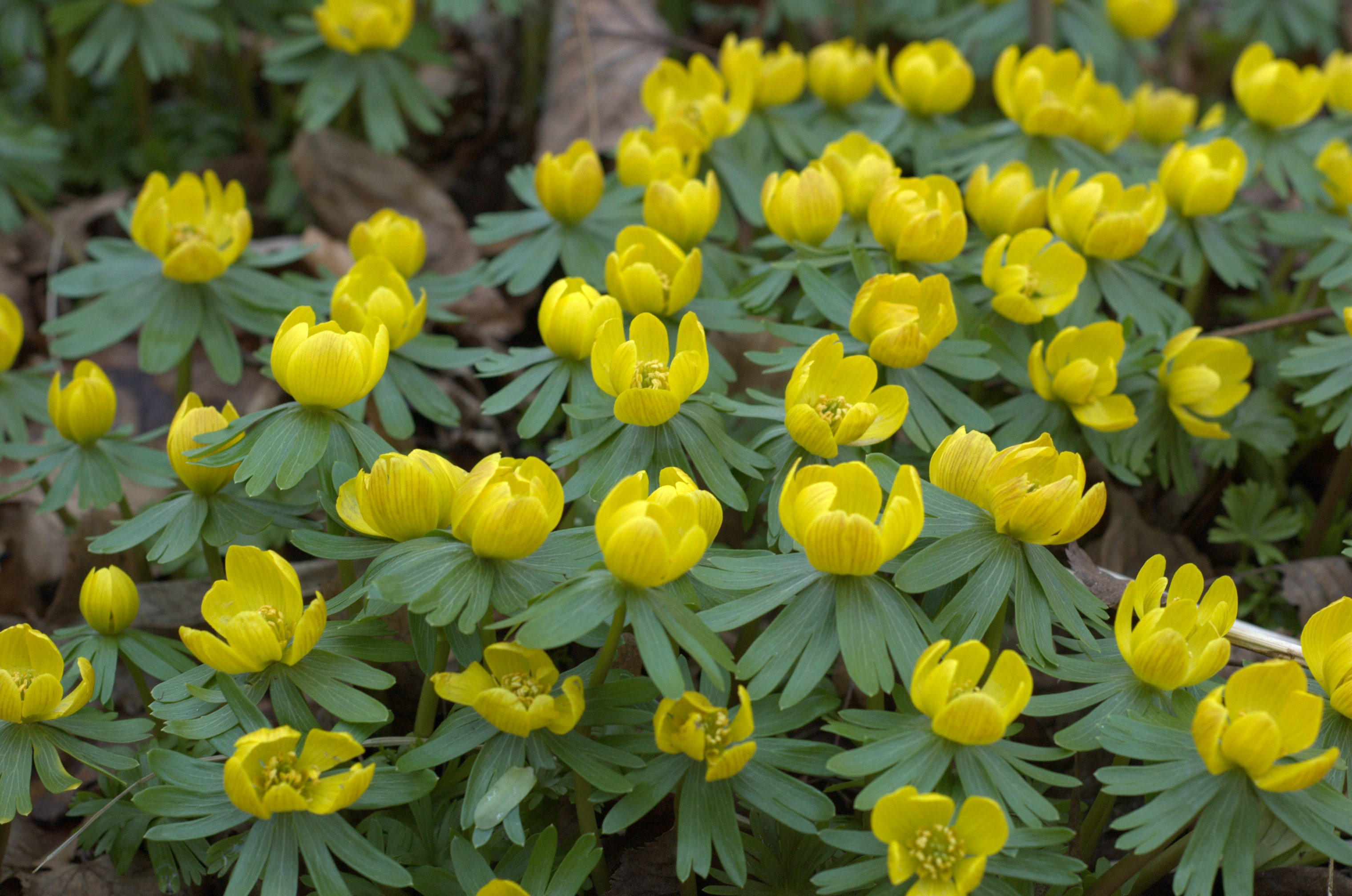



Botanical Name: Galanthus nivalis
Common Name: snowdrop
Family: Amaryllidaceae
Distribution/Origin: Europe
Leaf: simple, parallel venation, soft flexible with glabrous surfaces, linear with entire margins
Bud: basal
Flower: perfect, solitary, campanulate, 6 tepals, fragrant, showy white (Jan-Feb)
Fruit/Seed: 3 celled capsule, containing whitish seeds
Stem/Bark: green stems, bulbs
Size: up to 1’ height, less than 1’ spread
Habit: arching, stiffly upright, nodding flowers
Form: vase
Soil conditions: well drained, humus rich
Moisture: moist
Sun: filtered shade, part sun to shade
Exposure: do not let dry out in the summer
Landscape use: group or mass planting, perennial border, rock garden, small spaces, understory, winter interest, woodland garden
Notes:




Botanical Name: Hamamelis mollis 'Pallida'
Common Name: Chinese witch-hazel
Family: Hamamelidaceae
Distribution/Origin: SE Asia, Japan, China
Leaf: simple, heavily veined, pinnate venation, soft/flexible, obovate-orbicular, cordate to oblique base, serrate to undulate margins
Bud: alternate
Flower: clusters, perfect, 4 ribbon shaped petals, showy yellow to red, Dec-Feb
Fruit/Seed: brown capsules, splits explosively to disperse shiny black seeds
Stem/Bark: prominent lenticels, lightly fissured, multi stemmed, brown to grey
Size: 20-30’ height, 10-13’ spread
Habit: spreading, upright
Form: vase
Soil conditions: acidic, well drained, deep humus rich
Moisture: moderate
Sun: full sun
Exposure:
Landscape use: accent plant, mixed shrub border, specimen plant, winter interest
Notes:




Botanical Name: Helleborus argutifolius
Common Name: holly leaved hellebore
Family: Ranunculaceae
Distribution/Origin: Corsica, Sardinia
Leaf: spiny toothed margins, elliptic, deep green
Bud: basal
Flower: nodding, bowl shaped, 5 large showy petal like pale green sepals, large open clusters
Fruit/Seed: insignificant
Stem/Bark: flowering stems
Size: 1-3’ height & spread
Habit: caulescent
Form: clumping
Soil conditions: alkaline, fertile humus rich, well drained
Moisture: medium moisture
Sun: part shade to full shade
Exposure: leaves can become tattered and scorched if not sheltered from harsh winters with snow cover, tolerant of deer and heavy shade
Landscape use: shady locations, understory, woodland margins, naturalized areas, mass plantings, groundcover
Notes: spreads slowly through self seeding 

Botanical Name: Helleborus foetidus
Common Name: stinking hellebore
Family: Ranunculaceae
Distribution/Origin: Europe
Leaf: simple, glabrous dark green, lanceolate shape with serrated margins
Bud: basal
Flower: green and purple, loose cymes, 5 petal like sepals
Fruit/Seed: follicle
Stem/Bark: thick green succulent stems
Size: 2-4’ height, 2-3’ spread
Habit: erect
Form: clumping
Soil conditions: deep, fertile, humus rich, well drained
Moisture: moist
Sun: dappled shade
Exposure:
Landscape use: flower borders and beds, underplanting, woodland areas
Notes: pungent scent when leaves are crushed
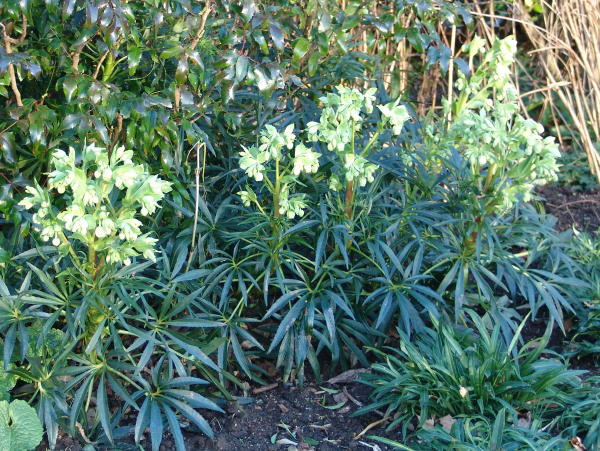



Botanical Name: Helleborus x hybridus
Common Name: hybrid lenten rose
Family: Ranunculaceae
Distribution/Origin: Europe, garden origin
Leaf: compoundly lobed, heavily veined, palmately venation, obovate shape, serrated margins, leaflets sometimes not fully divided
Bud: basal
Flower: perfect, cyme, varying colors, blooms from Jan-April
Fruit/Seed: follicle
Stem/Bark: green erect stems
Size: 1-2.5’ height, 1-2’ spread
Habit: uprightly pendulous
Form: mounded
Soil conditions: humus rich, well drained
Moisture: moist to dry
Sun: deep shade to partial shade or sun
Exposure: slightly drought tolerant
Landscape use: dryland, perennial border, rock garden, winter interest, woodland margin
Notes:




Botanical Name: Helleborus niger
Common Name: christmas rose
Family: Ranunculaceae
Distribution/Origin: Europe
Leaf: thick, leathery, palmately compound, oblanceolate to oblong, entire to serrated margins, pinnately lobed
Bud: basal
Flower: campanulate, perfect, cyme, showy, varying colors
Fruit/Seed: follicle, insignificant
Stem/Bark: rhizomes, erect green stems
Size: up to 1.5’ height, 1-2’ spread
Habit: low growing
Form: mounded
Soil conditions: organically rich, humusy, alkaline, well drained
Moisture: moderate
Sun: part sun to partial shade
Exposure: protection from harsh winter climates
Landscape use: shady understory, ground cover, winter interest, naturalized areas
Notes:

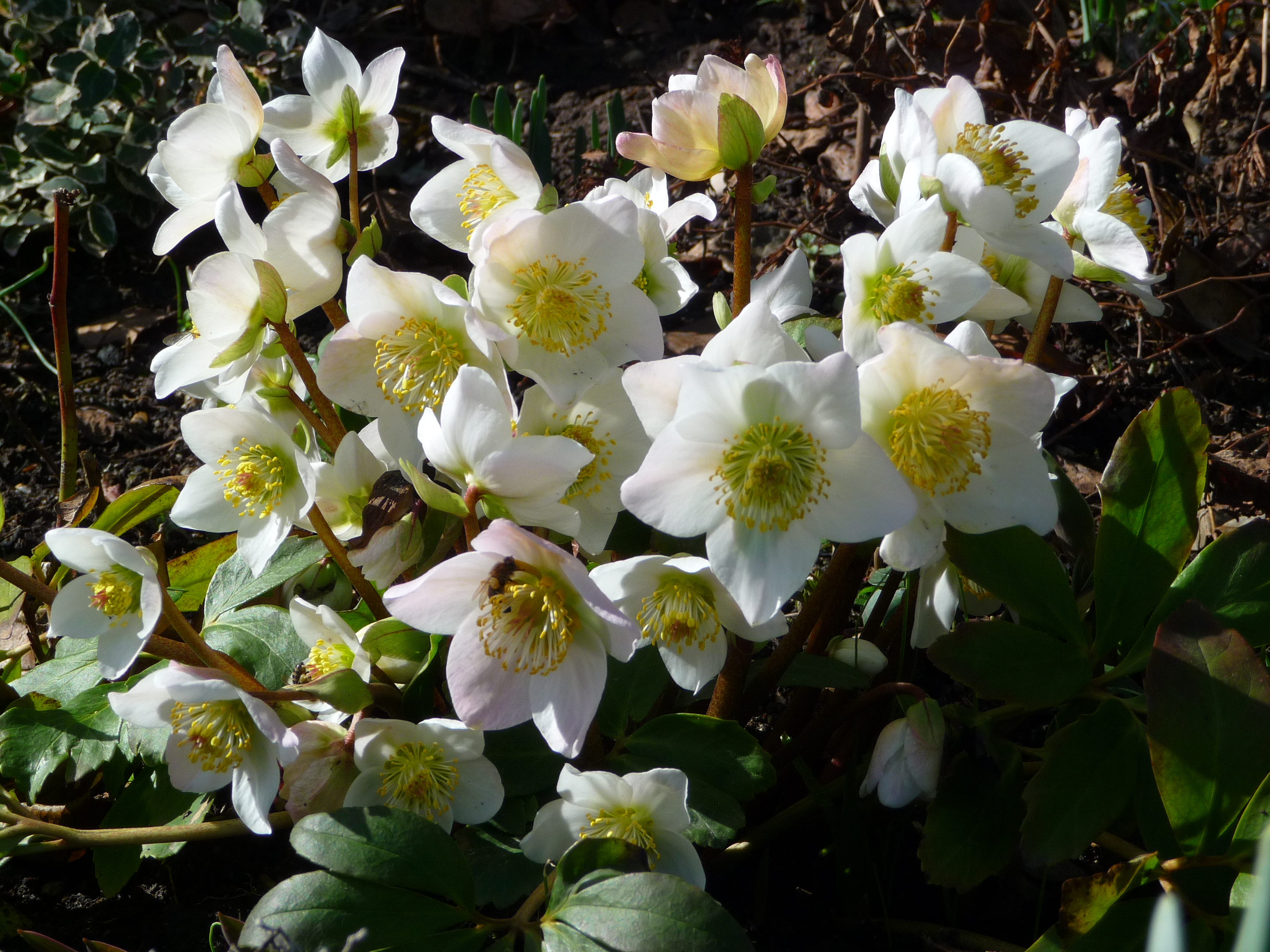

Botanical Name: Helleborus x sternii
Common Name: blackthorn hellebore
Family: Ranunculaceae
Distribution/Origin: garden origin
Leaf: greyish green, light undersides, serrated margins, elliptic to ovate
Bud: basal
Flower: large blooms, white with pink tinge, showy
Fruit/Seed: insignificant
Stem/Bark: crimsons stems
Size: 12-16” height, 6-12” spread
Habit: clumping
Form: mounding
Soil conditions: well drained, alkaline, organically rich
Moisture: dry to moist
Sun: full sun to partial shade
Exposure:
Landscape use: beds, borders, underplanting, containers
Notes:




Botanical Name: Ilex aquifolium
Common Name: English holly
Family: Aquifoliaceae
Distribution/Origin: Africa, Europe, South Asia
Leaf: thick, lustrous surfaces, undulating margins, light undersides, green
Bud: alternate
Flower: cyme, white, not showy, 4 petals
Fruit/Seed: red drupes, persistent
Stem/Bark: smooth grey, spines present
Size: 30-50’ height, 20-30’ spread
Habit: upright
Form: pyramidal, narrow
Soil conditions: acidic, well drained, adaptable, enriches the soil
Moisture: moderate
Sun: full sun to partial shade
Exposure:
Landscape use: hedgerow, screening, winter interest, security, barrier, borders
Notes: pioneer species that re-populates the forest margins of clearcuts

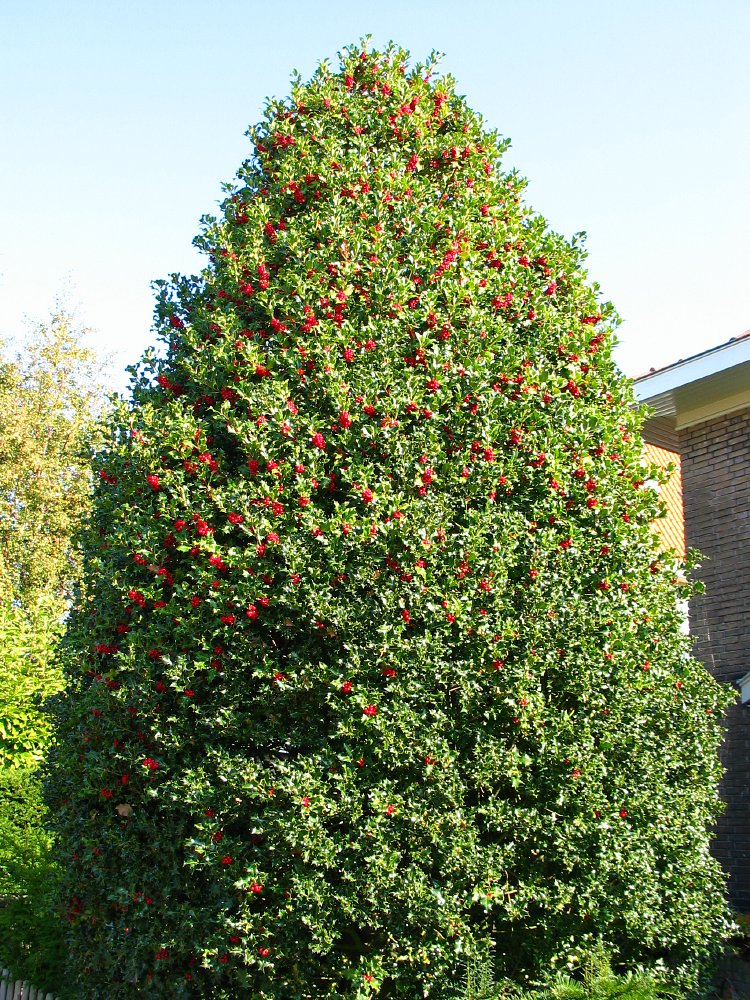


Botanical Name: Ilex crenata
Common Name: Japanese holly
Family: Aquifoliaceae
Distribution/Origin: Japan, Asia
Leaf: crenate margins, glossy dark green, elliptic to ovate
Bud: alternate
Flower: cyme, white to green, not showy
Fruit/Seed: black drupe containing 4 seeds
Stem/Bark: smooth brown
Size: 1-3’ height, 3-5’ spread
Habit: dense, spreading, stiffly upright
Form: rounded
Soil conditions: acidic soils, average, well drained
Moisture: moist
Sun: full sun
Exposure: grows well in sunny locations
Landscape use: container planting, filler, group or mass planting, mixed shrub border, screening, sheared hedge, topiary
Notes:




Botanical Name: Ilex verticillata
Common Name: winterberry, Canada holly, swamp holly
Family: Aquifoliaceae
Distribution/Origin: North America
Leaf: glossy green, elliptic to ovate, serrated margins with acute apex
Bud: alternate
Flower: greenish white blooms appear in leaf axils, appears on new growth
Fruit/Seed: globose red drupe
Stem/Bark: thin, smooth, brown to grey, lenticels present
Size: 3-16’ height, 10-15’ spread
Habit: suckering, upright
Form: rounded
Soil conditions: average, acidic, prefers organic loams
Moisture: wet
Sun: full sun to partial shade
Exposure: adaptable to many soils
Landscape use: year round interest, mass or group plantings, shrub borders, moist areas, hedging
Notes:



Botanical Name: Ilex opaca
Common Name: American holly
Family: Aquifoliaceae
Distribution/Origin: North America
Leaf: broad, stiff, yellow green, dull matte, margins curved into spike like points
Bud: alternate
Flower: green to whitish pedunculate cymes,
Fruit/Seed: small red drupe, containing 4 seeds, persist into winter
Stem/Bark: light grey, roughened by warty bumps, rusty down on twigs, smooth and brown with age
Size: up to 49’ height by 5-8’ spread
Habit: upright
Form: pyramidal
Soil conditions: average, well drained, acidic
Moisture: consistent moisture
Sun: full sun to partial shade
Exposure: tolerant of strong winds but not maritime exposure
Landscape use: woodland garden, secondary canopy, dappled shade, hedge
Notes:




Botanical Name: Myrica gale
Common Name: bog myrtle, sweet gale
Family: Myricaceae
Distribution/Origin: British Columbia, NE US, Europe
Leaf: simple, pinnate venation, glabrous, blue green with white undersides, oblanceolate with serrated margins, bright yellow wax glands in dots on both sides of leaves
Bud: alternately spiralled
Flower: catkins, green to yellow or brown
Fruit/Seed: green to brown drupe
Stem/Bark: thin, smooth
Size: 2-7’ height, 3-5’ spread
Habit: upright
Form: round
Soil conditions: nutritionally poor soils, acidic
Moisture: wet
Sun: filtered shade, full sun, part sun
Exposure:
Landscape use: fragrance, native garden, reclamation, waterside planting, wetland bogs
Notes: nitrogen fixing root nodules 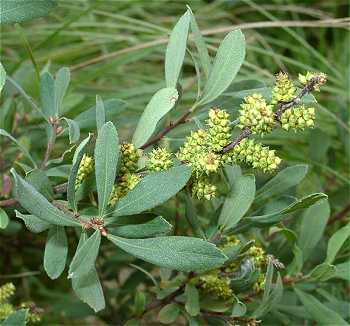

No comments:
Post a Comment